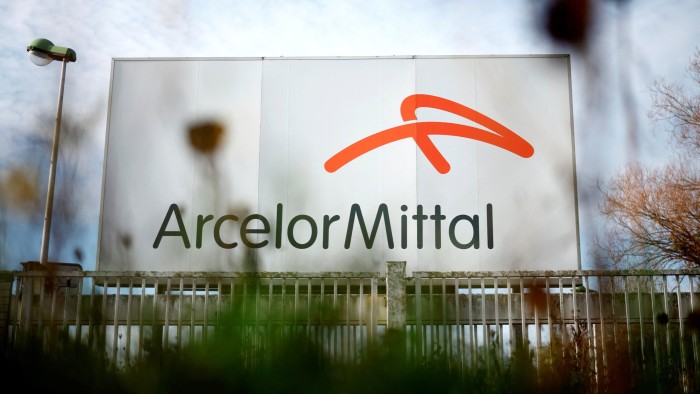Unlock the Editor’s Digest for free
Roula Khalaf, Editor of the FT, selects her favourite stories in this weekly newsletter.
ArcelorMittal said it would put on hold ambitious plans to invest in greener forms of steelmaking in Europe, blaming a lack of progress from EU policymakers to support the transition.
The world’s second-largest steelmaker said projects to replace its blast furnaces with hydrogen-powered, lower-carbon alternatives had been “premised on a favourable combination of policy, technology and market developments” to facilitate the required investment and help to offset large capital expenditure costs.
“This included being able to use natural gas until green hydrogen became competitive,” the company said on Tuesday. However Europe’s policy, energy and market landscape had not moved in a “favourable direction”.
ArcelorMittal also cited “significant weaknesses” in the bloc’s planned carbon border tax on imports and the need for trade measures to protect European producers from cheap Chinese imports for its decision.
Aditya Mittal, chief executive, said in a statement that the Luxembourg-based group was “very grateful” for the government support it had received, but that the “scale of the challenge requires further policy initiatives to unlock increased investment”.
The company, he added, “would have liked to move faster, but the reality is the regulatory environment required to support the business case for investments is not yet in place”.
But the company also said it expected positive policy developments in 2025, including the results of a review of the carbon border adjustment mechanism.
Producers have previously raised concerns the levy, as currently designed, could be circumvented by polluting countries by earmarking lower carbon steel for the EU.
ArcelorMittal is the latest European steelmaker to review its plans amid an increasingly tough operating environment. Germany’s Thyssenkrupp on Monday cited a rise in cheap imports from China for plans to cut its workforce by 40 per cent. The company had already announced a review of its plans for the production of green steel.
The bloc’s producers are under intense pressure to cut their carbon dioxide emissions while maintaining their profitability against fierce competition, notably from China.
China, the world’s largest steel producer, has been flooding world markets with the metal this year, and is on track to export more than 100mn tonnes — its highest export figure since 2016.
The surge has intensified trade tensions, prompting European steelmakers to call on officials to impose tariffs, as the flood of Chinese steel has sharply driven down prices across Europe.
Most European producers are investing in electric arc furnaces, which melt down recycled steel and emit a fraction of the carbon dioxide of traditional blast furnaces. To get to net zero emissions, however, the industry is banking on using “direct reduced iron” plants in combination with electric arc furnaces.
DRI plants use natural gas, and potentially green hydrogen, which at present is unavailable at scale, to extract pure iron from iron ore. The intermediate product, sponge iron, is then turned into crude steel in the electric arc furnace.
The European Commission has since 2002 approved more than €8bn in government grants to some of the region’s big producers to help them invest in DRI projects. ArcelorMittal alone has received close to €3bn in commitments.
The company said it was progressing with plans to build an electric arc furnace at Gijón in Spain, as well as increasing output at two existing arc furnaces at a second facility in the country.
It told the Financial Times that it expected the funding, which only becomes available once construction starts, to “remain in place” as it was not cancelling its decarbonisation plans.
Arcelor, it said, was “explaining why we do not have the clarity required to make final investment decisions at this point in time”.
“We need a certain and supportive regulatory environment to give us the confidence to decarbonise and remain competitive,” it added.
Read the full article here

